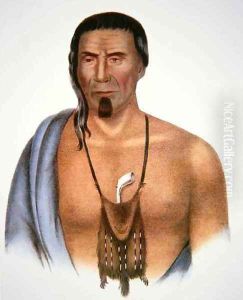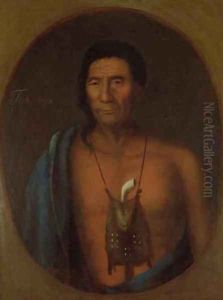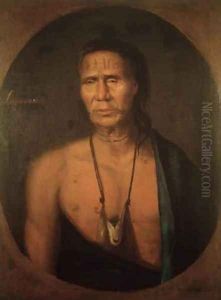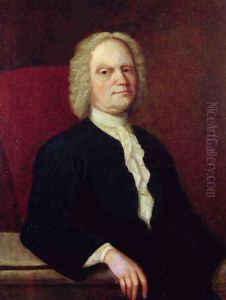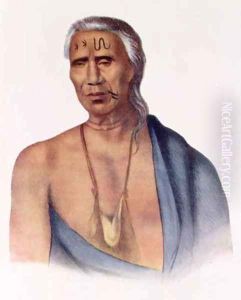Gustavus Hesselius Paintings
Gustavus Hesselius was a Swedish-born painter who is considered one of the earliest professional portrait painters in America. Born in 1682 in Folkärna, Sweden, he was the son of a clergyman and came from a family with ecclesiastical connections. Hesselius likely received his initial artistic training in Sweden, although specific details about his early education in art are scarce.
In 1711, Hesselius immigrated to America, settling in Philadelphia, which was then a burgeoning center of culture and commerce in the colonies. His arrival marked the introduction of European professional portrait painting to the middle colonies, and he quickly established himself as a portraitist for wealthy and influential colonial families.
Among his significant contributions to American art is the altarpiece he painted for Gloria Dei (Old Swedes') Church in Philadelphia, completed in 1731. This altarpiece is considered the first known painting of its kind (a large-scale religious work) in the colonies. Hesselius's portraits are characterized by their straightforward realism and lack of pretension, qualities that reflected the sensibilities of the colonial American patrons of the time.
In addition to portraits, Hesselius also painted some genre scenes and landscapes, although these are less well-known. His work provides a valuable visual record of early American colonial life and its inhabitants. His style also influenced other artists in the region, including his son, John Hesselius, who also became a prominent portrait painter.
Gustavus Hesselius passed away in 1755 in Philadelphia. His legacy lives on through his works, which are held in various collections and museums, including the Philadelphia Museum of Art and the National Gallery of Art in Washington, D.C.

